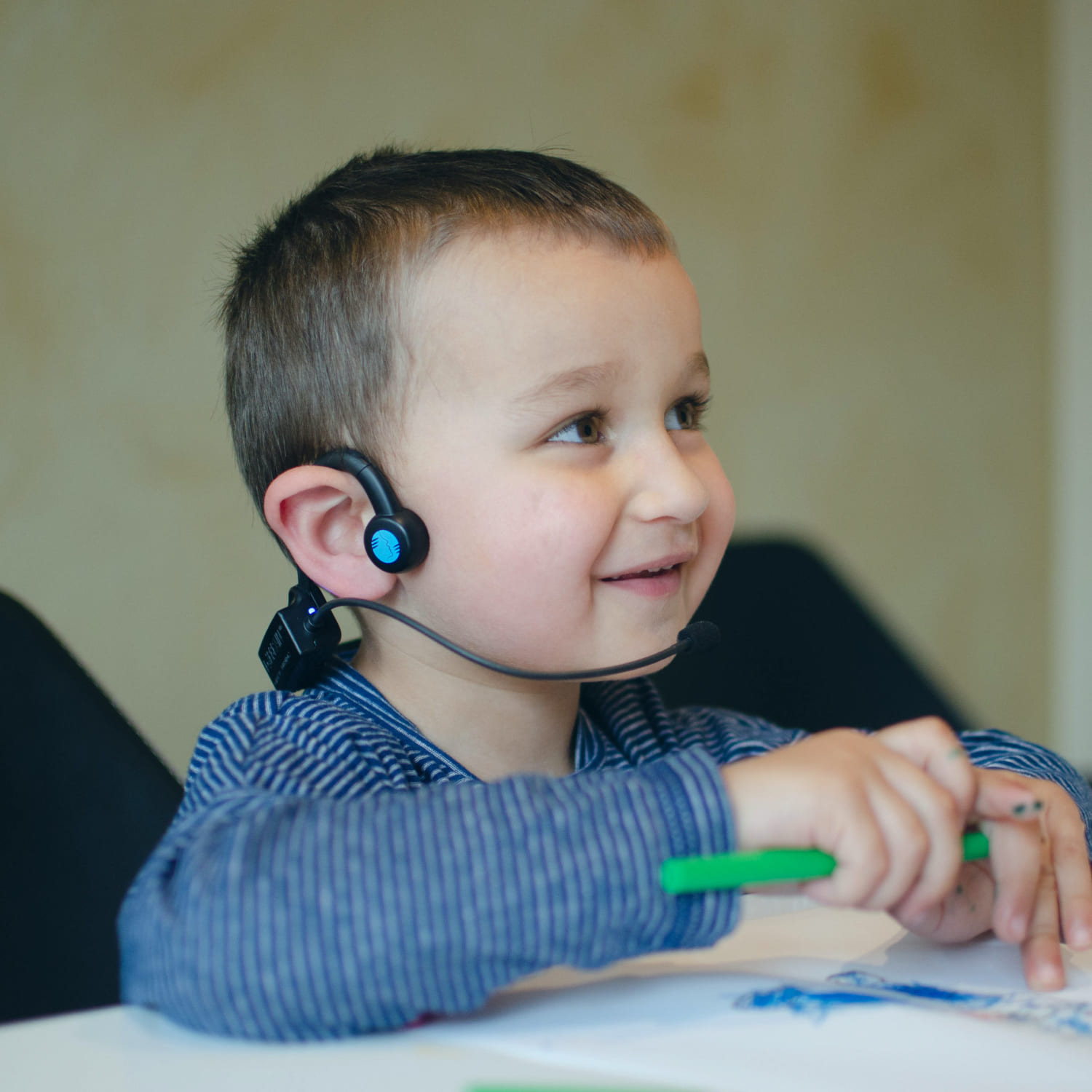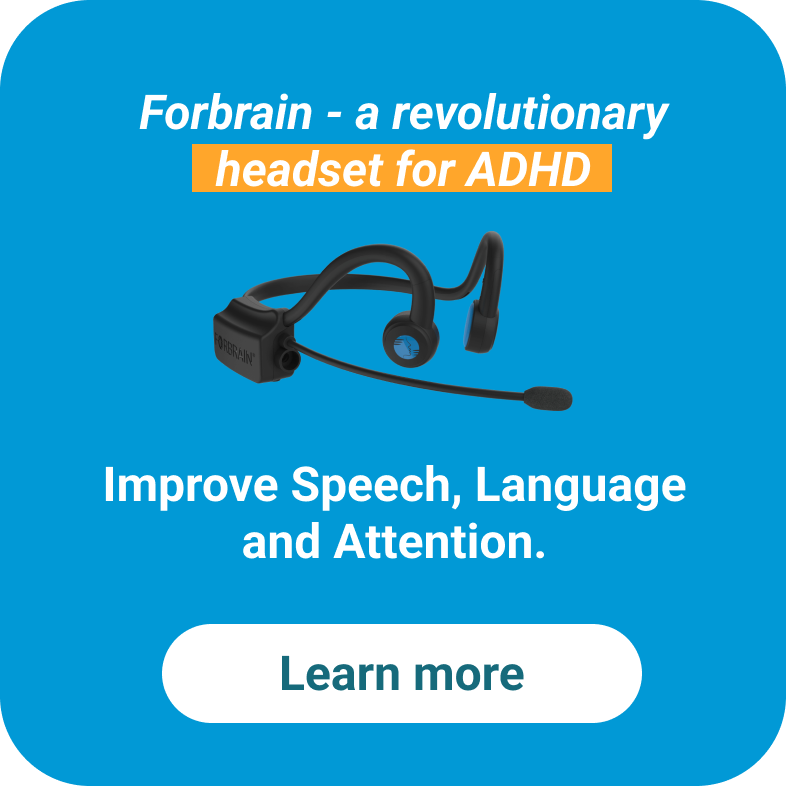How to Treat ADHD Child at Home: The Best Strategies
 Charlotte Witts
Charlotte Witts ESL Teacher
September 11, 2023

If your child has ADHD, you’ll know just how hard it is to give them the help, support, and guidance they need to thrive. When their symptoms flare up, they can be restless, irritable, quick to anger or get upset, struggle with motivation, get distracted easily, and are often misunderstood by those around them. Often, you can feel frustrated and hopeless as none of your attempts to treat your child’s ADHD at home seem to work and they continue to fidget, get distracted and fail to turn their homework in on time.
For that reason, we’ve created a comprehensive list of the most effective home treatments for ADHD that you can implement right now to see positive changes in your ADHD child.
This includes:
2. Being consistent and sticking to structure
3. Creating and communicating rules clearly
4. Developing their social skills
5. Providing a healthy diet and encouraging them to exercise
6. Promoting good sleep habits
8. Collaborating with teachers and professionals
10. Spending quality time together
1. Celebrate their wins!
Children with ADHD tend to be highly criticized and misunderstood in society because many believe that their symptoms are simply a sign of ‘bad behavior.’ As a result, their self-esteem, self-confidence, and their motivation can often suffer as they start to believe that they are ‘bad’ kids.
Instead of falling into this trap with harsh discipline or angry words, make a real effort to notice when they have tried hard, achieved a goal, or enjoyed any other kind of success. This could be anything from completing a school assignment, being kind to your pet dog or even cleaning up after themselves.
Also, make sure you’re also saying why you are so proud of them. For example, “Thank you for being kind to the dog. You made a real effort to look after him when you filled up his water bowl.”
By doing so, you’ll provide a supportive and encouraging environment that focuses on their effort and achievement, building their self-esteem and motivating them to achieve their best at school.
2. Be consistent and stick to structure
Consistency is key for the ADHD child. So, if you only implement one strategy on this list, make sure it’s creating a solid structure that includes allocated times for meals, homework, exercise, and activities. Use plenty of visual cues like colors, different fonts, and images to make it even easier to help your ADHD child at home.
Although this may seem restrictive, it actually helps your child feel safer, reducing stress and anxiety and making life feel much more predictable.
They can also use this strategy to manage their schoolwork as they get older, using planners, calendars, and apps to help them stay focused and manage their time more effectively.
3. Create and communicate rules clearly
When treating your ADHD child at home, make sure you have clear rules in place and then communicate them effectively.
Start by outlining on paper what you discuss then sit down with your child and discuss your expectations, making sure that they understand the reasons these rules are in place.
Wherever possible, write these rules down using plenty of color, easy-to-read fonts and simple language then fix it somewhere your ADHD can see. By doing so, you’re making sure that your child knows what is expected of them and gives them a sense of responsibility to adhere to these rules.
Also communicate these rules clearly to your child, giving them warnings if necessary to remind them if they are struggling to focus. Make eye contact or touch them on the arm if you need to get their attention and give brief, simple, short commands to make it easier for the ADHD brain to understand.
4. Develop their social skills
Helping your ADHD child develop stronger social skills can pay off enormously, help them feel understood and accepted by their peers and boost their self-confidence as a result.
However, children with ADHD are often misunderstood and struggle to make friends, manage peer relationships and read social cues which can be understandably difficult for the ADHD child who feels so desperate to bond with their peers and be accepted but often feels rejected, through no fault of their own.
The fact they often talk too much, interrupt and seem aggressive and emotionally immature can make matters worse.
You can help your ADHD child at home by providing a supportive environment that nurtures all kinds of relationships, including your parent-child relationship and theirs with their peers. Encourage them to participate in group activities, clubs or sports and ensure you’re always there to provide guidance if needed.
Also, encourage them to have at least one close friendship and be willing to look for these potential connections and set up playdates whenever needed.
5. Provide a healthy diet and encourage them to exercise
We all know that eating a healthy diet and getting plenty of exercise is essential if we want to achieve and maintain excellent health and brain function.
For the child with ADHD, this is even more important because it helps to calm their overactive or distractable minds, promotes optimal brain function and reduces stress, anxiety, and mood swings. Here are some tips:
- Provide your ADHD child with at least three healthy meals per day that include fresh vegetables, fruits, whole grains, healthy proteins, healthy fats, and omega-3 fatty acids.
- Limit their consumption of processed or high-sugar foods as it can worsen their ADHD symptoms and instead, opt for healthy, nutrient-dense snacks.
- Schedule time for regular physical activity to burn off that excess energy, boost self-esteem and help them resist their ADHD impulsivity and focus better. Team sports are a great choice!
6. Promote good sleep habits
Have you ever struggled to focus after sleeping badly the night before? You lack energy, stress can have a bigger impact and your health can also suffer as a result.
The same goes for ADHD kids- if they don’t sleep well, symptoms of ADHD like impulsivity, emotional reactiveness, focus and motivation will suffer if they don’t get the sleep they need.
For this reason, make sure you establish a regular bedtime and bedtime routine to help your child wind down, switch off their brains and get the sleep they need. Avoid screens before bedtime and instead read a book together, give them a bath and encourage them to self-soothe until they can sleep.
Experts recommend 11-13 hours of sleep for 3- to 5-year-olds, 10-11 for 5- to 12-year-olds, and 8-10 hours for teenagers. How much sleep is your ADHD child getting?
7. Stay positive
When you’re helping your ADHD child at home, don’t forget to take care of yourself too. Parenting a child with ADHD can be tough and you need to look after yourself, prioritize self-care and put the right steps into place so the two of you can thrive together.
Start by taking time to understand the ADHD brain, the symptoms of ADHD and how to handle it so you can better understand your child’s behavior, reduce your stress, and remember that you aren’t the only one helping an ADHD child at home.
Also, remember that you cannot cure your child’s ADHD. It’s not a disability but a brain with a slightly different operating system and a lot of love and understanding can go a long way.
Then focus on open communication, encourage your child to pursue their strengths and interests, and follow the steps we’ve shared here to make your journey easier.
8. Collaborate with teachers and professionals
ADHD can cause your child to face unique challenges in the classroom which can disrupt their learning, behavior, and self-esteem. If this is the case, collaborate with your child’s school to see if they can offer an evaluation and ongoing support or seek the advice of a professional.
When you have this support network in place, communicate with them often, share your ADHD child’s strengths, challenges, and any strategies you have put in place and work toward a common goal- the success and happiness of your child.
You don’t have to do this alone. Grab any help you can get and help your child shine, despite their challenges.
9. Discipline with warmth
If your ADHD child ignores your rules, try to avoid harsh punishments that are likely to trigger their emotions and affect their self-esteem. Instead, discipline your child with love and warmth using natural or logical consequences.
By helping your ADHD child at home like this, you’ll guide them towards making more positive choices and understanding the consequences of their actions without damaging your parent-child bond.
10. Spend quality time together
One of the most effective ways to help your ADHD child at home is to spend quality time together where you can chat openly, and your child can freely express their thoughts and opinions without fear of judgment.
This helps reinforce that vital parent-child bond, and makes them feel safe, secure, loved, and accepted, exactly how they are. They will understand that you are on their side and be more likely to try to achieve their best, despite the challenges their ADHD places in their path to success.
Using Forbrain for ADHD Home Treatment
Forbrain is a highly effective tool you can use to help your ADHD child to better manage their symptoms, reduce impulsivity and focus better while boosting their working memory and language skills.
This technologically advanced headset uses therapist-approved bone conduction technology and dynamic filters to strengthen the neural connections associated with attention and language processing.
Used for just 10 minutes per day for as little as six weeks, you can help your ADHD child to improve their focus, concentration, working memory, speech and language skills and confidence so they can achieve their best.
Final Words
To address the challenges of ADHD, understanding how to treat ADHD child at home is crucial in creating a supportive environment. Start by celebrating their wins, being consistent and making sure the rules are clear to ensure they have a predictable environment and feel supported to achieve their best. Next, look for ways to boost their social skills, helping to guide them whenever needed, spending quality time together and staying warm and positive. Finally, prioritize sleep, nutrition, and exercise to help provide their growing brains with everything they need to control their symptoms, stay healthy, and feel confident enough to achieve their best.
By taking these easy steps to help your child with ADHD as well as using the patented Forbrain headset, you’ll help them to learn more effectively, control their impulses and enjoy a successful and fulfilling life.
References
U.S. Department of Health and Human Services. (n.d.). Attention-deficit/hyperactivity disorder in children and teens: What you need to know. National Institute of Mental Health. https://www.nimh.nih.gov/health/publications/attention-deficit-hyperactivity-disorder-in-children-and-teens-what-you-need-to-know
Sussex Publishers. (n.d.). Why it’s important to celebrate small successes. Psychology Today. https://www.psychologytoday.com/intl/blog/1-2-3-adhd/202111/why-its-important-celebrate-small-successes
Koseva, N. (2023, August 23). Children with ADHD and routines: Building healthy structures. The ADHD Centre. https://www.adhdcentre.co.uk/children-with-adhd-and-routines/
Ghanizadeh, A. (2011, June). Sensory processing problems in children with ADHD, a systematic review. Psychiatry investigation. https://www.ncbi.nlm.nih.gov/pmc/articles/PMC3149116/
Mikami, A. Y. (2010, June). The importance of friendship for youth with attention-deficit/hyperactivity disorder. Clinical child and family psychology review. https://www.ncbi.nlm.nih.gov/pmc/articles/PMC2921569/
Ryu, S.-A., Choi, Y.-J., An, H., Kwon, H.-J., Ha, M., Hong, Y.-C., Hong, S.-J., & Hwang, H.-J. (2022, July 16). Associations between dietary intake and attention deficit hyperactivity disorder (ADHD) scores by repeated measurements in school-Age children. Nutrients. https://www.ncbi.nlm.nih.gov/pmc/articles/PMC9322602/
Becker, S. P. (2020, August). ADHD and sleep: Recent advances and future directions. Current opinion in psychology. https://www.ncbi.nlm.nih.gov/pmc/articles/PMC7082190/
Aghebati, A., Gharraee, B., Hakim Shoshtari, M., & Gohari, M. R. (2014). Triple P-positive parenting program for mothers of ADHD children. Iranian journal of psychiatry and behavioral sciences. https://www.ncbi.nlm.nih.gov/pmc/articles/PMC4078694/





